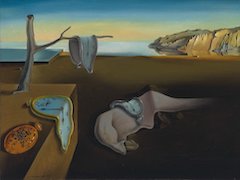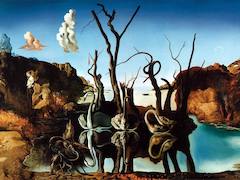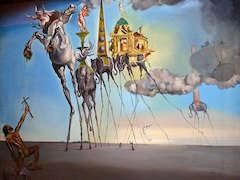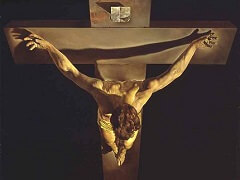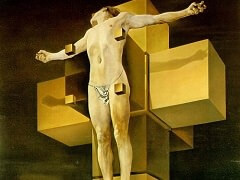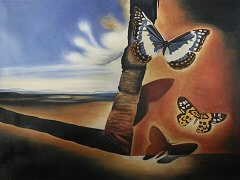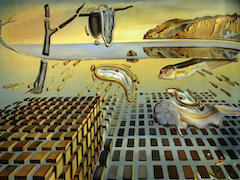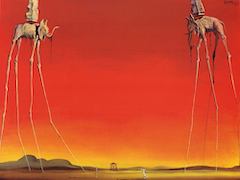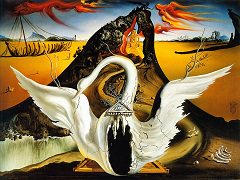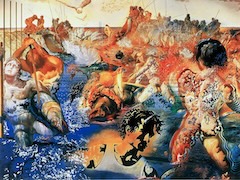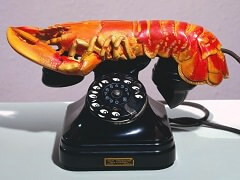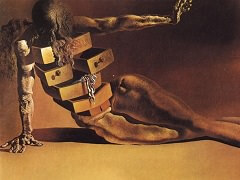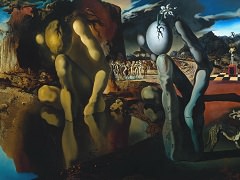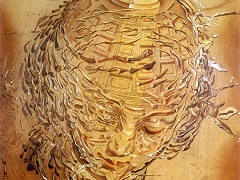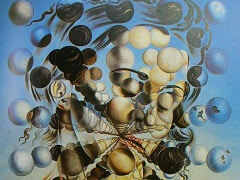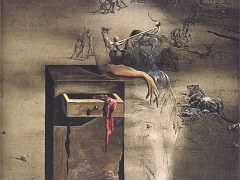Apparatus and Hand, 1927 by Salvador Dali
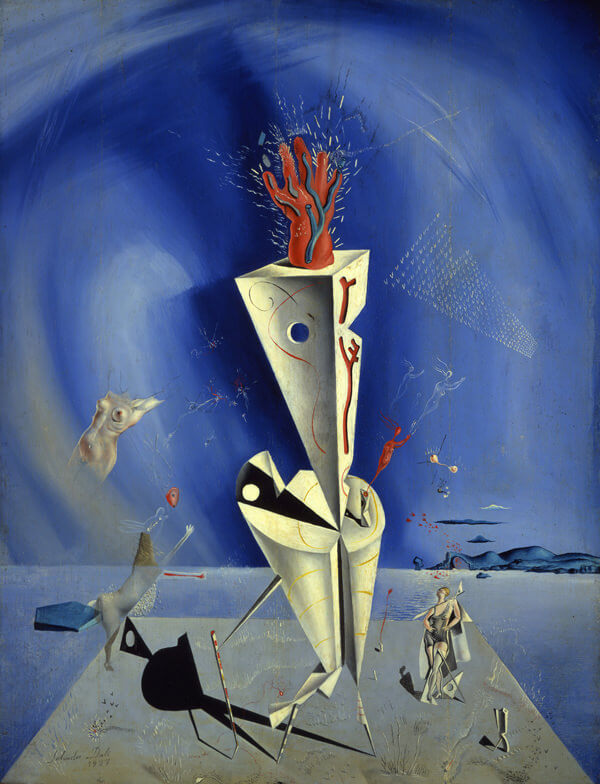
Although Dali did not officially join the Surrealists until 1929, their influence can clearly be seen in this work of 1927. Apparatus and Hand contains an array of highly ambiguous geometric and organic forms which were certainly inspired by Surrealists Joan Miro and Rene Magritte.
The Surrealists founded their work on the ideas of Sigmund Freud, the father of psychoanalysis. For Dali, Freud's influence began prior to joining the group in 1929. As students in Madrid, Dali and his friends read Freud's 'The Interpretation of Dreams'. He says he was "seized with a real vice of self-interpretation, not only of my dreams but of everything that happened to me, however accidental it might seem..."
With its dreamlike symbols, Apparatus and Hand is the first work in the museum's collection in which Dali began applying Freud's ideas about dream analysis to his work. In a vivid blue landscape, a machine-like apparatus rises over a scene of disconnected images. Crowned by a red-skinned hand, its unbalanced arrangement appears ready to topple, evoking the unsettling feeling of a dream. The shadow cast by the apparatus suggests a person standing with a cane. Swarming around the apparatus are delirious images of desire and fear. These include floating female anatomy, an angular female bather, a red fish and fish bones, and a donkey filled with flies. Dali's symbols in his early work are not always clearly defined. If the apparatus symbolizes a person, perhaps the female images are symbols of desire, and the dead donkey and fish skeleton are warnings of the consequences of acting on that desire. This painting's use of symbols foretells the style that would make Dali an international success in the 1930s.

